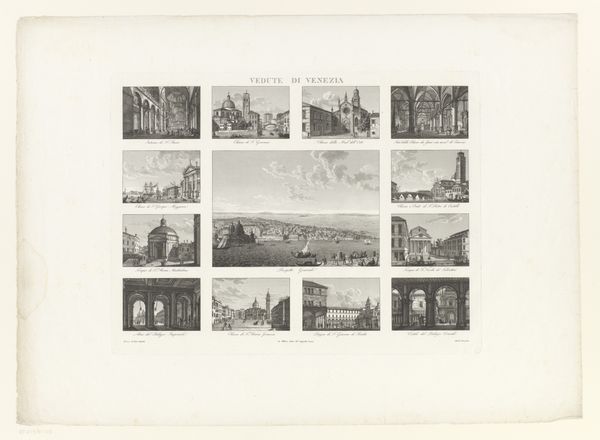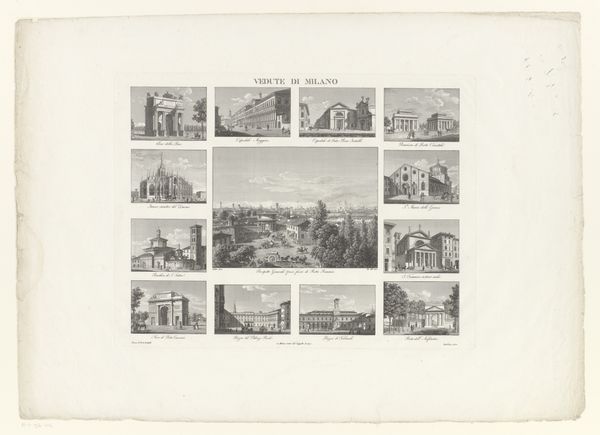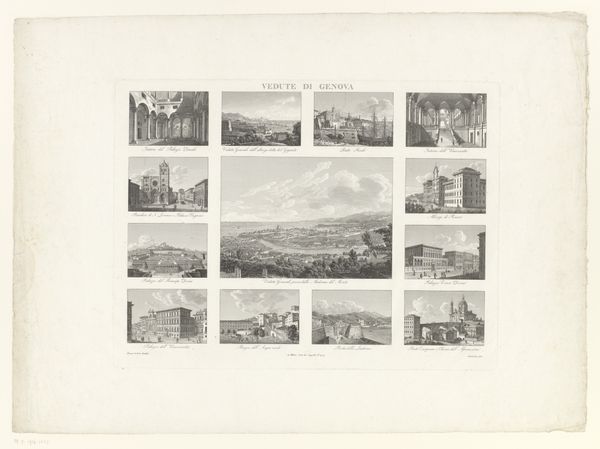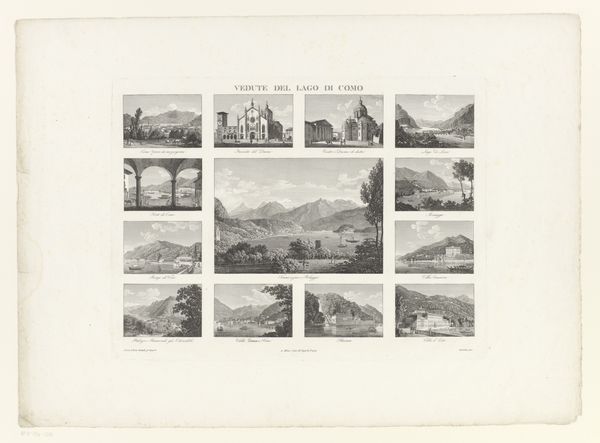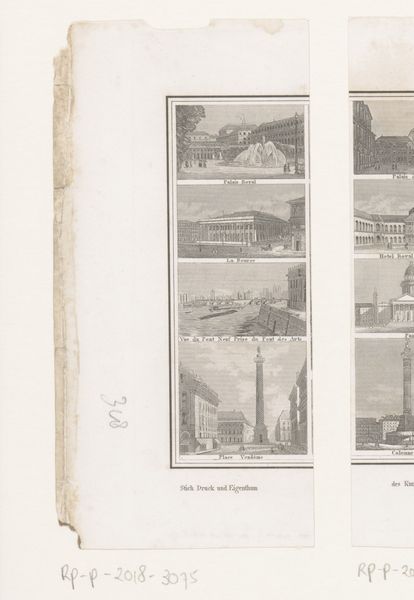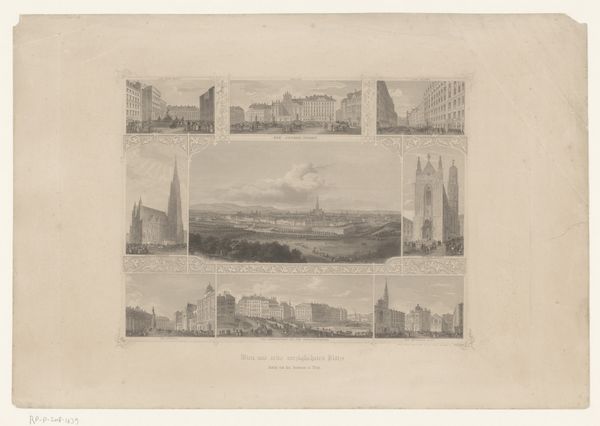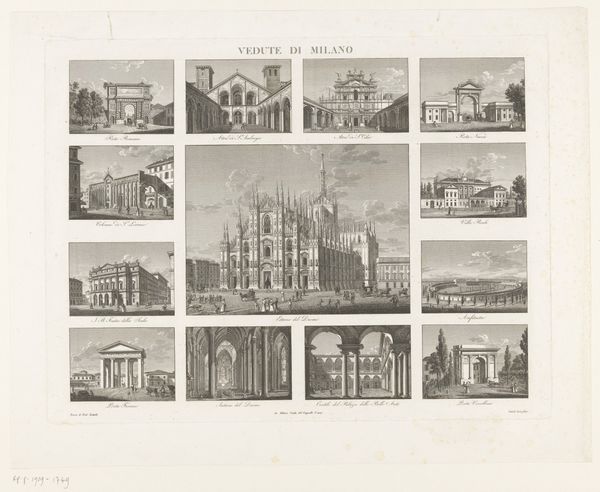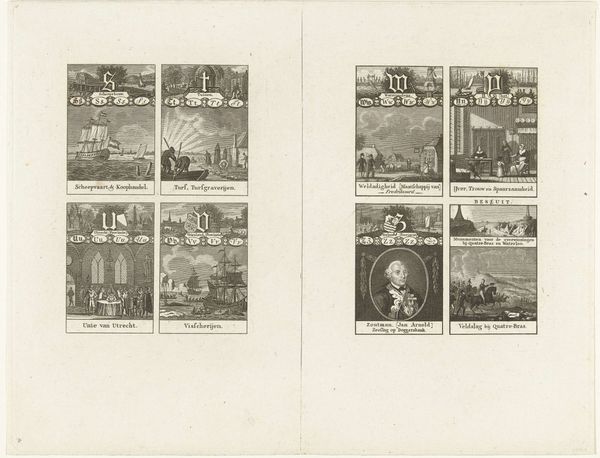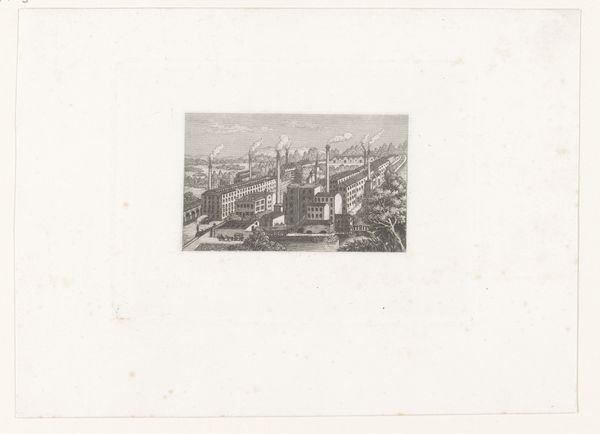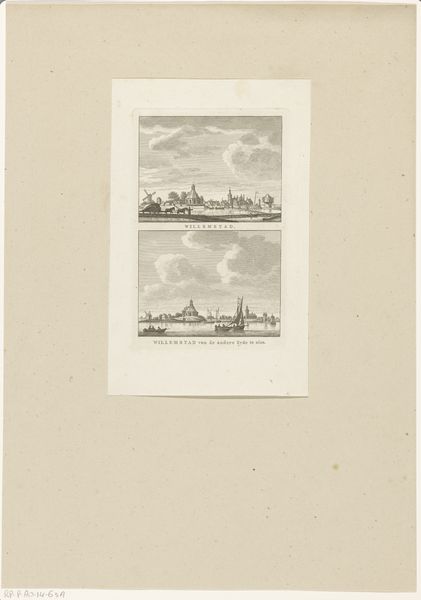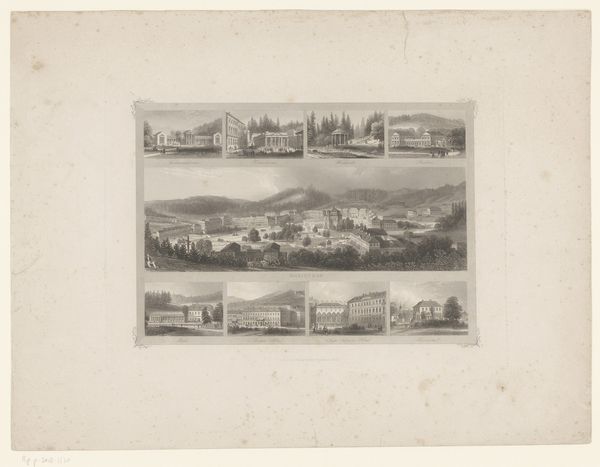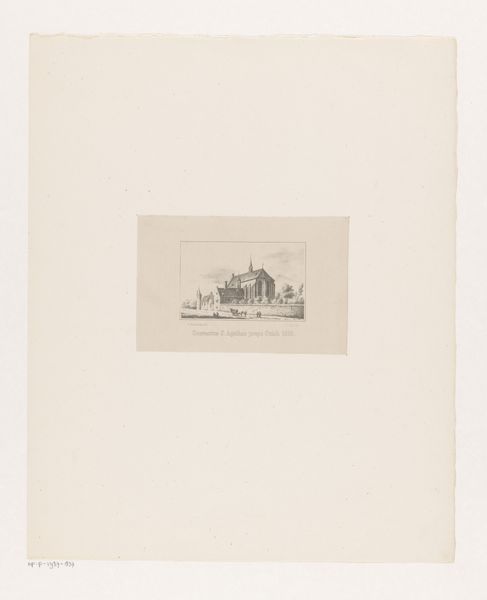
Dimensions: height 334 mm, width 445 mm
Copyright: Rijks Museum: Open Domain
Curator: Well, isn’t this enchanting? We’re looking at “Gezicht op Venetië,” or “View of Venice,” a print made sometime between 1794 and 1837. Editor: It has a very methodical feel. Almost like a study, or an inventory. Not at all how I picture Venice, really. More like a record. Curator: I think that comes from its precision. It's an engraving, so every line, every shadow, is meticulously rendered. You’ve got twelve little vignettes offering differing perspectives of the floating city. See how each one is labeled? Editor: Indeed. It emphasizes its role in documentation. The medium becomes paramount. Engraving suggests mass production, making Venice accessible—as an image at least—to a broader audience through reproduction. Curator: And in its own way, it captures the Romantic spirit. Each little scene invites you to imagine wandering down its narrow streets or floating along the canals. It gives a taste, a romantic tease. Though that romanticism, for me, clashes slightly with that rigorous depiction you're talking about. Editor: Right. The production clashes a bit against our typical notions of 'high art,' doesn't it? Printmaking has always occupied this interesting space—capable of incredible artistry but often existing to disseminate information or be functional. Curator: Absolutely. It’s fascinating to consider how that affects our appreciation. We think of landscape paintings bathed in sunlight, impasto textures… but here, it’s a cityscape filtered through the process of engraving. What gets emphasized, what gets lost? Editor: We start to value line, the craftsman's skill, the very tangible labor of cutting into that printing plate. This isn't just about "Venice," it's about the making *of* Venice—as a commodity, as an image, even. It highlights how representations influence what we consider 'Venice.' Curator: The repetition of architectural features does become quite interesting—domes, arches, canals. Perhaps a meditation on timelessness, Venice’s resistance to time? The echo of those architectural shapes resonates, almost like the lapping of the waves… or, I suppose, the echo of the artisan’s chisel. Editor: I’m finding myself thinking more about how prints like these fueled the imaginations—and the economies—of tourism. It's the material circulation, the production… It forces us to engage with the piece outside of that sort of classical beauty that initially leaps to mind. Curator: You’ve nudged me to imagine the hands that made this print, and then all the other hands that held it and imagined their Venetian dreams. Editor: Precisely. A landscape indeed. And it's fascinating, isn't it, how such a 'simple' print engages us in the very material conditions that inform our idea of beauty, art, or even the Grand Tour?
Comments
No comments
Be the first to comment and join the conversation on the ultimate creative platform.
